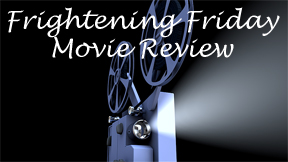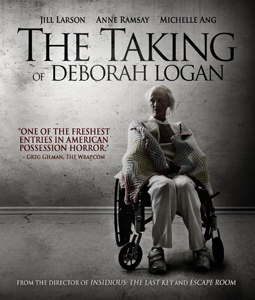Adam Robitel, who went on to direct the best “Insidious” film – 2018’s “The Last Key” – made his mark with a decidedly above-average found-footage horror movie, 2014’s “The Taking of Deborah Logan.” It follows a crew of camera-laden documentarians pursuing a unique premise: that Alzheimer’s has a measurable effect on the caregiver as well as the afflicted.
It’s daring, and perhaps controversial, to use the real horror of Alzheimer’s as the entry point for fictional horror. But also rather appropriate, as we see the emotional and physical toll caregiving takes on Sarah (Anne Ramsay), the middle-aged daughter of the title character (the wonderful Jill Larson).
A horror that people really deal with
We’re reminded that — despite the conveniences of modern appliances and technology — if someone doesn’t have control of their faculties, they could easily hurt themselves or damage their property without a vigilant eye on them.

“The Taking of Deborah Logan” (2014)
Director: Adam Robitel
Writers: Adam Robitel, Gavin Heffernan
Stars: Jill Larson, Anne Ramsay, Michelle Ang
But by the end, “Deborah Logan” is more horror than a collection of harrowing Alzheimer’s situations. Oddly, the traditional horror is a relief from the disease. Even in the early going, writer-director Robitel and co-writer Gavin Heffernan combine the actual behavior of someone with a deteriorating brain with a touch of inexplicable mystery.
“Deborah Logan” uses the genre’s touchstones effectively at a country abode large enough to have three attics (!) – which works out well since the titular elderly lady is a hoarder. The two cameramen explore rooms with furniture shrouded in dust covers, Deborah’s vaguely sinister paintings, and the Logans’ old telephone switching station.
Meanwhile, Deborah begins to act particularly strange, climbing out of the window to do some after-midnight gardening in the woods.
The acting is notably good for a fauxumentary, with Ramsay’s flustered but strong Sarah appreciative of the visiting documentarians. They’re led by Michelle Ang’s Mia, who is accompanied by cameramen Luis (Jeremy DeCarlos) and Gavin (Brett Gentile). The documentarians – via their funding sponsor – are helping the Logans with rent in exchange for access.
Getting it all on camera
So that central question that often plagues found-footage films is answered. Why would they keep filming? Because they’re making a thorough documentary about Alzheimer’s behavior – and it’s hard to tell precisely when Deborah’s behavior switches to something with another explanation.
Robitel hits on all the tropes but gives the illusion of something more complex. Mia and company dig into the past based on Deb’s ramblings. And neighbor Harris (Ryan Cutrona), loyal to Deb for decades, looms on the perimeter of the camera’s long shots, often holding a shovel.
The finale is as big as the buildup deserves, and it manages to take us to even spookier locales (and this is after peeks into three attics). But it’s also a rather chaotic presentation of a situation found in many horror movies.

The verisimilitude of people still running their cameras holds up (barely), but certain characters’ knowledge of how to handle matters conveniently keeps up with the story’s insanity. A final twist fits with the narrative but is shoddily staged.
“The Taking of Deborah Logan” is in an odd position. The Alzheimer’s exploration is stark and impactful, but then it goes beyond that into cinematic horror. Although that’s what we came for, it minimizes the real-world horrors a bit – and it misses chances for metaphors about identity and self-control (except in the broadest sense).
That’s not something to complain about in terms of watchability, but it is in terms of memorability.

